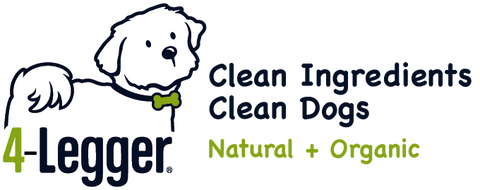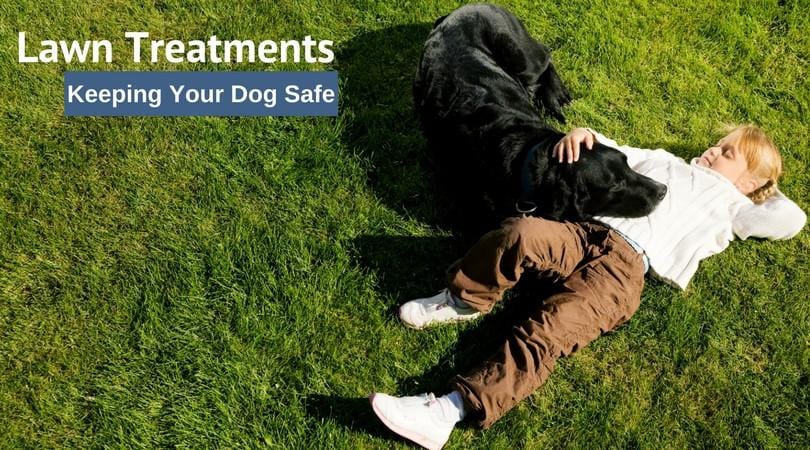Lawn Treatments and Your Dog - Keeping It Safe
In our last post, we talked about bioaccumulation, also referred to as "body burden", and how long term exposure to toxic chemicals is building up in our systems, making us and our dogs sick.
How very timely that after writing about bioaccumulation I saw a lawn treatment truck at a neighbors house. Yes, the neighbor has a dog.
It is apparent that the need for education on lawn care is across the street and around the globe.
The typical lawn treatment plan is 5 lawn treatments a year for fertilizer and herbicides - weed control. Throw in quarterly insecticide control to keep the bugs and spiders out of the house as well as a possible 4 month program of mosquito treatments and what do you have?
How about 13 treatments a year of herbicides, fungicides, and pesticides. Nine or more treatments a year x the current average life of a dog - 12.5 years. This means that a dog living the average life span would have approximately 162.5 exposures to unnecessary toxic chemicals.
The lawn people say, "As soon as it is dry, it is safe for your pet." The truth behind that statement is not to protect your dog. They recommend waiting until the treatment has dried to limit their own liability if your dog walks through the treatment treated lawn and tracks it into your garden causing your flowers or vegetables to be killed.
Looking back I wonder, had I completely lost my mind to ever believe this absolute rubbish? I'm a smart woman. I know better than that. Those chemicals may "dry" on the blade of grass (until it rains) or leach into the soil, but the long term damage the toxic chemicals do to your yard's eco-system goes far beyond just your yard.
The science shows that the lawn chemicals (2,4-dichlorophenoxyacetic acid (2,4-D), 4-chloro-2-methylphenoxypropionic acid (MCPP), and dicamba) remained detectable on grass for at least 48 hours after application, and the chemicals persisted even longer on grass under certain environmental conditions. [Source: Science of the Total Environment]
The detection of lawn chemicals in the urine of dogs was widespread. Lawn chemicals were also found in 4 of 8 untreated yards suggesting chemical drift from the lawns of neighbors. [Source: Science of the Total Environment]
In 2004, researchers from Purdue University found that Scottish terriers exposed to lawn and garden herbicides had a higher occurrence of bladder cancer (4-7x higher) than Scottish terriers not exposed to herbicides. This finding in a breed that is already 20x more likely to develop bladder cancer is significant. [Source: Purdue University]
When your dog goes out onto the lawn, the toxic chemicals get on your dog's feet and legs. If they roll in the grass, toxic chemicals are now on their back! Your dog may also eat grass on occasion. Back inside, your dog probably licks their paws. "Being dry" doesn't change the fact that your dog is ingesting toxic chemicals. The toxic chemicals that come off the blade of grass end up in your dog.
Even if you don't treat your own yard, your dog is still exposed to toxic chemicals if they go into a neighbors yard on a walk, walking through runoff from rain water or chemical drift.
The implications of these two studies for human health are eye opening. These chemicals can be tracked inside your house. Do you want your baby crawling on the floor your dog just tracked herbicides all over? Just by holding or petting your dog you may be transferring these chemicals to yourself. How many times did my dog run around the yard and I immediately picked them up and loved on them?
Let's look at the 30 commonly used lawn pesticides (including herbicides, insecticides, and fungicides):
- 7 have strong links to cancer
- 10 are being studied for possible links to cancer
- 13 are linked to birth defects
- 21 are linked to reproductive defects
- 26 are linked to liver or kidney damage
- 15 are linked to neurotoxicity
- 11 are linked to disruption of the endocrine (hormonal) system
Of those same pesticides, 17 are detected in groundwater, 23 have the ability to leach into drinking water sources, 24 are toxic to fish and other aquatic organisms vital to our ecosystem, 11 are toxic to bees, and 16 are toxic to birds. [Source: http://www.beyondpesticides.org/]
Keep in mind that outside the few studies there are not a lot of studies that look for the direct links between pesticides, dogs, and disease occurrence.
Yet, dogs are especially sensitive to pesticide exposure as they take in more pesticides relative to their body weight than their human counterparts and they have more direct exposure to the toxic chemicals. When young they have developing organ systems that are more vulnerable and less able to detoxify toxic chemicals.
Recently, a lawn treatment company came to my front door and offered an "all natural lawn treatment". I asked for the Material Safety Data Sheets (MSDS) of the chemicals they use. The chemicals were the same listed in the top 30 pesticides to avoid.
Clearly "all natural" as a marketing slogan has not only hit the dog shampoo and food industries, it has now also entered the lawn treatment industry!
Beyond Pesticides maintains the Pesticide-Induced Diseases Database that looks at real world exposure and scenarios that link human public health effects to pesticides.
Note that the exposure of humans to pesticides would likely be lower than the exposure of dogs to pesticides as they have more direct contact with the chemically treated areas.
Still, the scientific literature documents elevated rates of chronic diseases among people exposed to pesticides, with increasing numbers of studies associated with both specific illnesses and a range of illnesses (from thyroid dysfunction, Parkinson's disease and more).
So, what can you do if you want that beautiful green lawn?
Use true organic lawn care methods.
Traditional lawn care methods use synthetic chemicals to treat what we see growing on the surface while creating an imbalanced ecosystem beneath.
Organic lawn care seeks to bring the entire lawn eco-system into balance by focusing on building healthy soil, which in turn grows healthy grass that is naturally drought, disease, weed and pest-resistant.
It may take a few seasons for your yard to transition back to healthy but every time you see your dog walk around in your safe and non-toxic yard you will be greatly rewarded.
As a good healthy practice, after walking your dog around the neighborhood, washing their feet with 4-Legger USDA Certified Organic Dog Shampoo when you get home will wash off the environmental toxins before they wind up in your dog or on you!





